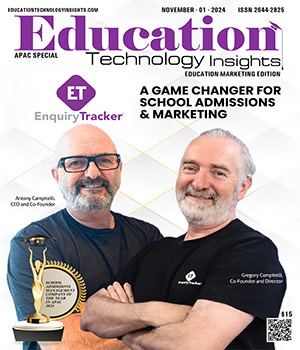THANK YOU FOR SUBSCRIBING
Be first to read the latest tech news, Industry Leader's Insights, and CIO interviews of medium and large enterprises exclusively from Education Technology Insights
When a Marketing Metric Really Means More than You Think
Robert M. Kadar, Senior Director of Marketing, Graduate Programs at Yeshiva University
 Robert M. Kadar, Senior Director of Marketing, Graduate Programs at Yeshiva University
Robert M. Kadar, Senior Director of Marketing, Graduate Programs at Yeshiva UniversityHigher-education marketers often miscalculate the cost per application in a misleading way—dividing the total marketing department cost (or sometimes total ad spend) by the number of applications. Consider these scenarios:
A) $1,000,000 spent / 1,000 applications = $1,000 per application.
B) $10,000 spent / 500 applications = $20 per application, 50x better than A.
C) $0 spend / 1000 applications = No cost per application.
The flawed assumption assumes a 1:1 relationship between cost and application, disregarding that not every dollar spent guarantees increased applications. For instance, Harvard might receive the same number of applications even without marketing expenses.
So, how do you get a 1:1 relationship? A true cost per application requires connecting the first time the prospect visited your site from an ad click to the application, an extremely challenging task, but we want to know if someone unfamiliar with us found our paid promotion and then applied.
Our team has achieved this by establishing a link between an enrolled student's first encounter with our program and an ad click. This took years of work, from cleaning and organizing historical enrollment data, setting up a marketing CRM that has a unique integration with the enrollment CRM, and creating a process for importing enrollment data into our marketing CRM.
Even after reaching the top of the digital tracking summit, we realized we would never have a perfectly accurate cost-per-application metric: tracking the digital footprint of all applications and enrollees is impossible. We've been humbled by what we can't know and how to still use the data we have to make better decisions on how to spend our budget.
Here are a few key things we have learned:
1. Optimizing for Leads Is a Mistake. Most prospective students go straight to the application after spending countless hours researching schools and programs. I wrote an article here about the false allure of lead generation. In short, 90 percent of enrolled students never fill out a lead form (either paid or organic).
"WDon’t expect micro-targeted advertisement alone to grow your enrollment"
2. Prospects Aren’t Sold, They Are Informed. Trying to sell a degree that is often as expensive as a house doesn’t work. The prospect is not interested in glitzy ads with cliché taglines such as ‘Achieve Your Dreams.’ We see a lot of forced and extractive marketing practices, such as ads that lead to blind alley landing pages with almost no relevant content and a big form on top that requests the prospect for their contact info in exchange for program info. Our data shows that it takes 6-9 months for most prospects to apply after clicking our ad — demonstrating how discerning prospects truly are. Do we really think prospects (in the age of data privacy) don't know what happens after they fill out a form? Perhaps more importantly, we should ask: why are we gating content that should live on our website?
3. Don't Confuse Recruitment with Advertisement, and Don't Replace the Latter with the Former. The overwhelming majority of applicants don’t learn about your school from advertising — they independently research schools, visit your site, and then reach out to a human, not a chatbot. We tend to think 'stealth' applicants are those mysterious prospects who somehow got through our tracking wall. Nonsense. Our stellar tracking system shows that over 80 percent of enrollees came to our site from non-trackable sources. That just means prospects find their way to you — you can't determine their path. Yes, ads make them aware of you, but they'll decide when to email, call, and show up to an info session or open house. The best ad is not on social media or Google; it is a compassionate recruiter who helps the prospect with the life-changing decision of a two or four-year degree. One of our recruiters visits Paris every year to attend university fairs – so it isn't surprising that our biggest feeder schools are in France. Don't expect micro-targeted advertisements alone to grow your enrollment.
In conclusion, the cost per applicant is not an easy calculation because knowing how your marketing delivered applications is extremely difficult and imperfect. But once you dive in, you may find insights for delivering what matters the most: a great educational product.
Weekly Brief
Featured Vendors
Read Also
Empowering Educators through Purposeful, Connected and Transformative Learning
Empowering Students to Lead: A New Vision for Civic Learning
The Director's Playbook: Strategic Digital Transformation in Rual Hyper-Growth Districts
The Art and Architecture of Student Support
From At-Risk to At-Promise: The Language Revolution Higher Education Needs
Teaching Tomorrow: How Western Governors University Is Redefining Teacher Preparation

I agree We use cookies on this website to enhance your user experience. By clicking any link on this page you are giving your consent for us to set cookies. More info

























